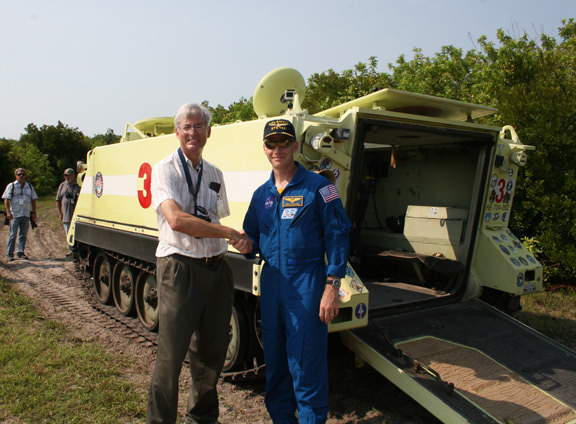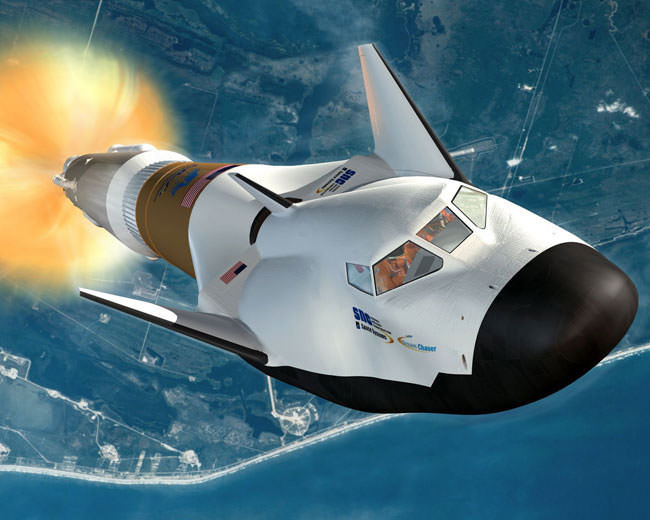Host: Fraser Cain (@fcain)
Special Guest: Bas Lansdorp, CEO of Mars One
Guests:
Morgan Rehnberg (cosmicchatter.org / @MorganRehnberg )
Brian Koberlein (@briankoberlein)
Alessondra Springmann (@sondy)
Dave Dickinson (@astroguyz / www.astroguyz.com)
Continue reading “Weekly Space Hangout – April 24, 2015: Bas Lansdorp, CEO of Mars One”
Weekly Space Hangout – March 27, 2015: Dark Matter Galaxy “X” with Dr. Sukanya Chakrabarti
Host: Fraser Cain (@fcain)
Special Guest: Dr. Sukanya Chakrabarti, Lead Investigator for team that may have discovered Dark Matter Galaxy “X”.
Guests:
Morgan Rehnberg (cosmicchatter.org / @MorganRehnberg )
Dave Dickinson (@astroguyz / www.astroguyz.com)
Brian Koberlein (@briankoberlein)
Continue reading “Weekly Space Hangout – March 27, 2015: Dark Matter Galaxy “X” with Dr. Sukanya Chakrabarti”
Dream Chaser Spacecraft Maker Loses NASA Crew Contract Protest
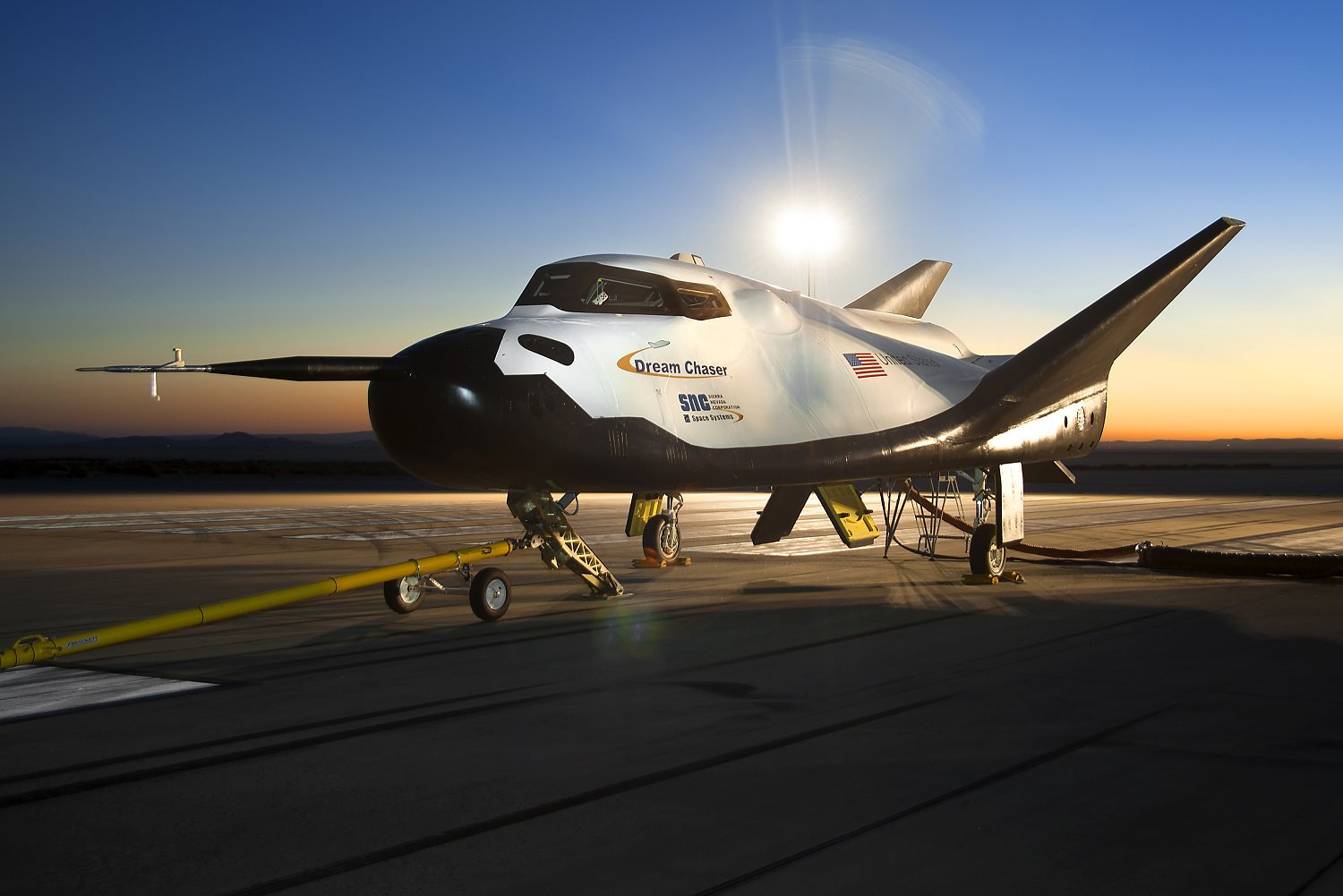
Update, 4 p.m. EST: Sierra Nevada’s statement, which was posted after the story was first published, is now mentioned below.
Sierra Nevada’s protest concerning NASA’s commercial crew program was turned down today (Jan. 5), according to a statement from the U.S. Government Accountability Office.
The company is developing a spacecraft called the Dream Chaser, which was in competition for NASA funding along with Boeing’s CST-100 and SpaceX’s Dragon to bring crews to the International Space Station. A few months ago, NASA awarded further development money to Boeing and SpaceX, prompting a protest from Sierra Nevada.
At the time, Sierra Nevada both protested the decision and requested a stop-work order on all commercial crew work. The stop-work order was lifted fairly quickly, but the protest remained under review. From today, this was the crux of the GAO statement, which you can read in full here:
In making its selection decision, NASA concluded that the proposals submitted by Boeing and SpaceX represented the best value to the government. Specifically, NASA recognized Boeing’s higher price, but also considered Boeing’s proposal to be the strongest of all three proposals in terms of technical approach, management approach, and past performance, and to offer the crew transportation system with most utility and highest value to the government. NASA also recognized several favorable features in the Sierra Nevada and SpaceX proposals, but ultimately concluded that SpaceX’s lower price made it a better value than the proposal submitted by Sierra Nevada.
In making its selection decision, NASA concluded that the proposals submitted by Boeing and SpaceX represented the best value to the government. Specifically, NASA recognized Boeing’s higher price, but also considered Boeing’s proposal to be the strongest of all three proposals in terms of technical approach, management approach, and past performance, and to offer the crew transportation system with most utility and highest value to the government. NASA also recognized several favorable features in the Sierra Nevada and SpaceX proposals, but ultimately concluded that SpaceX’s lower price made it a better value than the proposal submitted by Sierra Nevada.
Other key points:
- The prices for each proposal were as follows: Sierra Nevada was $2.55 billion, Boeing’s was $3.01 billion and SpaceX’s $1.75 billion.
- NASA, the GAO said, had “no undue emphasis” on any proposal’s schedule or the chances of a particular system making it to orbit by 2017. Also, the agency did say in its request for proposals that the 2017 certification goal would be a part of the process — a different point than what Sierra Nevada argued, who said the agency had added that stipulation while the process was underway.
- NASA’s review of SpaceX’s price and “financial resources” was adequate, along with its evaluation of the competing proposals in terms of mission suitability and past performance. This was in contrast to Sierra Nevada’s argument.
This is part of what Sierra Nevada had to say about the decision. The company also said it plans to maintain ties with NASA. The full statement is here.
While the outcome was not what SNC expected, we maintain our belief that the Dream Chaser spacecraft is technically very capable, reliable and was qualified to win based on NASA’s high ratings of the space system. We appreciate the time and effort contributed to this process by the GAO and NASA to fully evaluate such a critical decision for the United States …
SNC also plans to further the development and testing of the Dream Chaser and is making significant progress in its vehicle design and test program. In addition, SNC is continuing to expand its existing, while developing new, partnerships domestically and abroad in order to expand the multi-mission flexibility of the system, reduce overall long-term costs of the vehicle and ensure long-term affordability and sustainability for the Dream Chaser.
A public record of the decision is expected in a few weeks. Right now, due to the proprietary nature of the information, only NASA personnel and a few “outside counsel” are able to view it, the GAO added.
Protest Delays NASA Commercial Crew Spacecraft Work: Report
NASA told two companies to halt work on the next phase of its commercial crew program — the spacecraft expected to replace Russian ones ferrying astronauts to the International Space Station — because of a protest related to the contract award, according to media reports.
Sierra Nevada Corp. (SNC) filed a complaint on Sept. 26, shortly after its Dream Chaser shuttle-like design was not selected for further funding under the Commercial Crew Transportation Capability (CCtCap) phase of the program. Competitors SpaceX and Boeing each received billions of dollars for further development for their Dragon and CST-100 spacecraft, which are expected to start flying around 2017.
A Spaceflight Now report, quoting NASA spokesperson Stephanie Schierholz, said the agency told both selectees that they must “stop performance of the CCtCap contract” pending the result of the challenge, which is before the Government Accountability Office. The office’s deadline for a response is Jan. 5, the report said.
In a statement, SNC said this is the first fight it undertook in relation to a government contract in more than five decades of operations. “Inconsistencies” in the process, SNC added, prompted it to go forward with the protest:
Importantly, the official NASA solicitation for the CCtCap contract prioritized price as the primary evaluation criteria for the proposals, setting it equal to the combined value of the other two primary evaluation criteria: mission suitability and past performance. SNC’s Dream Chaser proposal was the second lowest priced proposal in the CCtCap competition. SNC’s proposal also achieved mission suitability scores comparable to the other two proposals. In fact, out of a possible 1,000 total points, the highest ranked and lowest ranked offerors were separated by a minor amount of total points and other factors were equally comparable.
NASA administrator Charles Bolden declined to comment on the situation last week in response to questions from reporters at the International Astronautical Congress in Toronto, Canada, citing the legal situation.
Boeing Completes All CST-100 Commercial Crew CCiCAP Milestones on Time and on Budget for NASA – Ahead of Competitors
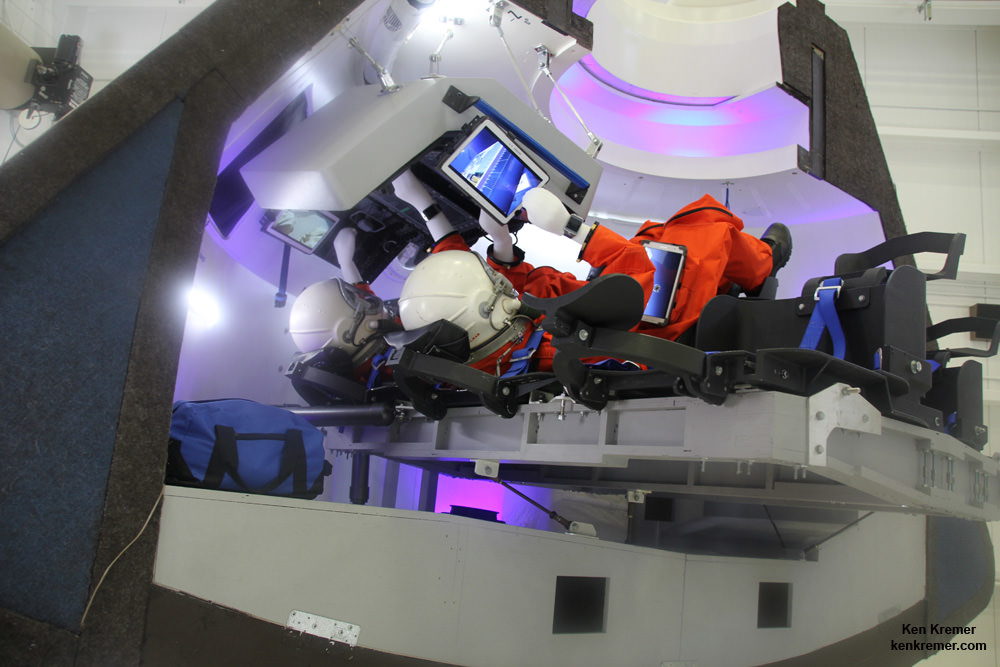
In the ‘new race to space’ to restore our capability to launch Americans to orbit from American soil with an American-built commercial ‘space taxi’ as rapidly and efficiently as possible, Boeing has moved to the front of the pack with their CST-100 spaceship by completing all their assigned NASA milestones on time and on budget in the current phase of the agency’s Commercial Crew Program (CCP).
Boeing is the first, and thus far only one of the three competitors (including Sierra Nevada Corp. and SpaceX) to complete all their assigned milestone task requirements under NASA’s Commercial Crew Integrated Capability (CCiCap) initiative funded under the auspices of the agency’s Commercial Crew Program.
The CST-100 is a privately built, man rated capsule being developed with funding from NASA via the commercial crew initiative in a public/private partnership between NASA and private industry.
The overriding goal is restart America’s capability to reliably launch our astronauts from US territory to low-Earth orbit (LEO) and the International Space Station (ISS) by 2017.
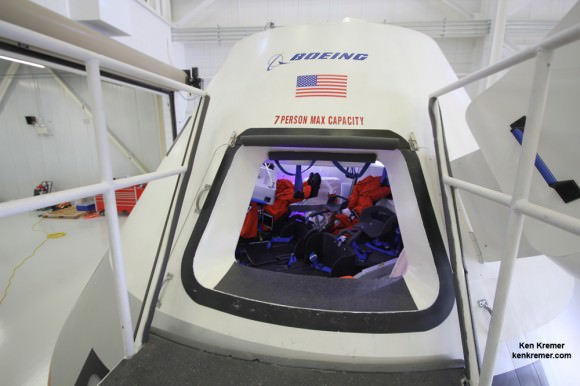
Private space taxis are the fastest and cheapest way to accomplish that and end the gap in indigenous US human spaceflight launches.
Since the forced shutdown of NASA’s Space Shuttle program following its final flight in 2011, US astronauts have been 100% dependent on the Russians and their cramped but effective Soyuz capsule for rides to the station and back – at a cost exceeding $70 million per seat.
Boeing announced that NASA approved the completion of the final two commercial crew milestones contracted to Boeing for the CST-100 development.
These last two milestones are the Phase Two Spacecraft Safety Review of its Crew Space Transportation (CST)-100 spacecraft and the Critical Design Review (CDR) of its integrated systems.
The CDR milestone was completed in July and comprised 44 individual CDRs including propulsion, software, avionics, landing, power and docking systems.
The Phase Two Spacecraft Safety Review included an overall hazard analysis of the spacecraft, identifying life-threatening situations and ensuring that the current design mitigated any safety risks, according to Boeing.
“The challenge of a CDR is to ensure all the pieces and sub-systems are working together,” said John Mulholland, Boeing Commercial Crew program manager, in a statement.
“Integration of these systems is key. Now we look forward to bringing the CST-100 to life.”
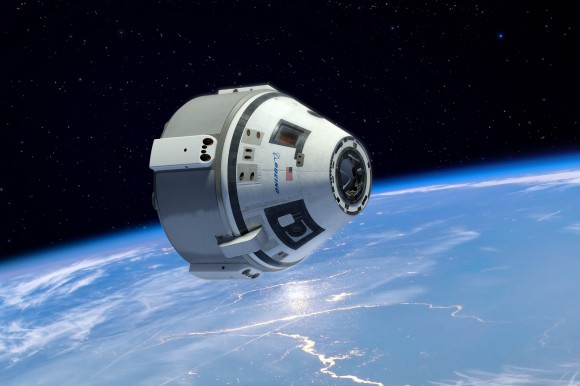
Passing the CDR and completing all the NASA milestone requirements is a significant step leading to the final integrated design for the CST-100 space taxi, ground systems and Atlas V launcher that will boost it to Earth orbit from Space Launch Complex-41 on Cape Canaveral Air Force Station in Florida.
The Sierra Nevada Dream Chaser and SpaceX Dragon V2 and are also receiving funds from NASA’s commercial crew program.
All three American aerospace firms vying for the multibillion dollar NASA contract to build an American ‘space taxi’ to ferry US astronauts to the International Space Station and back as soon as 2017.
NASA’s Commercial Crew Program office is expected to announce the winner(s) of the high stakes, multibillion dollar contract to build America’s next crew vehicles in the next program phase, known as Commercial Crew Transportation Capability (CCtCap), “sometime around the end of August/September,” NASA News spokesman Allard Beutel confirmed to me.
“We don’t have a scheduled date for the commercial crew award(s).”
There will be 1 or more CCtCAP winners.
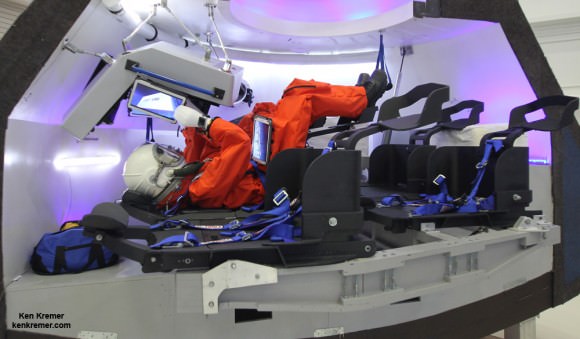
On June 9, 2014, Boeing revealed the design of their CST-100 astronaut spaceliner by unveiling a full scale mockup of their commercial ‘space taxi’ at the new home of its future manufacturing site at the Kennedy Space Center (KSC) located inside a refurbished facility that most recently was used to prepare NASA’s space shuttle orbiters for assembly missions to the ISS.
The CST-100 crew transporter was unveiled at the invitation only ceremony and media event held inside the gleaming white and completely renovated NASA processing hangar known as Orbiter Processing Facility-3 (OPF-3) – and attended by Universe Today.
The huge 64,000 square foot facility has sat dormant since the shuttles were retired following their final flight (STS-135) in July 2011 and which was commanded by Chris Ferguson, who now serves as director of Boeing’s Crew and Mission Operations.
Ferguson and the Boeing team are determined to get Americans back into space from American soil with American rockets.
Read my exclusive, in depth one-on-one interviews with Chris Ferguson – America’s last shuttle commander – about the CST-100; here and here.
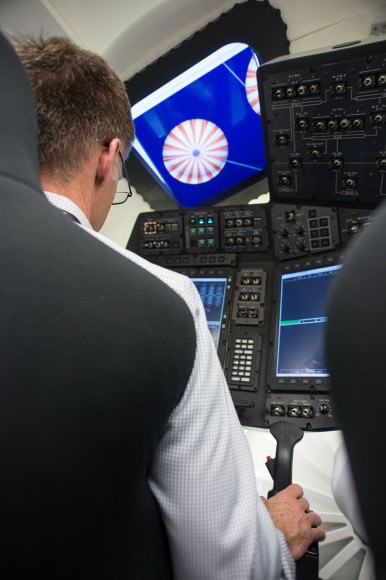
Boeing’s philosophy is to make the CST-100 a commercial endeavor, as simple and cost effective as possible in order to quickly kick start US human spaceflight efforts. It’s based on proven technologies drawing on Boeing’s 100 year heritage in aviation and space.
“The CST-100, it’s a simple ride up to and back from space,” Ferguson told me. “So it doesn’t need to be luxurious. It’s an ascent and reentry vehicle – and that’s all!”
So the CST-100 is basically a taxi up and a taxi down from LEO. NASA’s complementary human space flight program involving the Orion crew vehicle is designed for deep space exploration.
The vehicle includes five recliner seats, a hatch and windows, the pilots control console with several attached Samsung tablets for crew interfaces with wireless internet, a docking port to the ISS and ample space for 220 kilograms of cargo storage of an array of equipment, gear and science experiments depending on NASA’s allotment choices.
The interior features Boeing’s LED Sky Lighting with an adjustable blue hue based on its 787 Dreamliner airplanes to enhance the ambience for the crew.
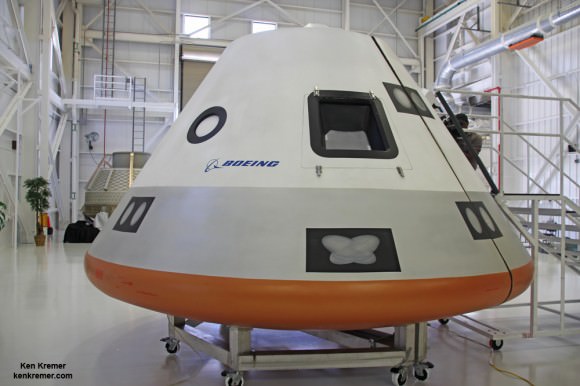
The reusable capsule will launch atop a man rated United Launch Alliance (ULA) Atlas V rocket.
“The first unmanned orbital test flight is planned in January 2017… and may go to the station,” Ferguson told me during our exclusive interview about Boeing’s CST-100 plans.
Since 2010, NASA has spent over $1.5 billion on the commercial crew effort.
Boeing has received the largest share of funding in the current CCiCAP phase amounting to about $480 million. SpaceX received $460 million for the Dragon V2 and Sierra Nevada Corp. (SNC) has received a half award of $227.5 million for the Dream Chaser mini-shuttle.
SNC will be the next company to complete all of NASA’s milestones this Fall, SNC VP Mark Sirangelo told me in an exclusive interview. SpaceX will be the final company finishing its milestones sometime in 2015.
Stay tuned here for Ken’s continuing Boeing, Sierra Nevada, SpaceX, Orbital Sciences, commercial space, Orion, Curiosity, Mars rover, MAVEN, MOM and more planetary and human spaceflight news.
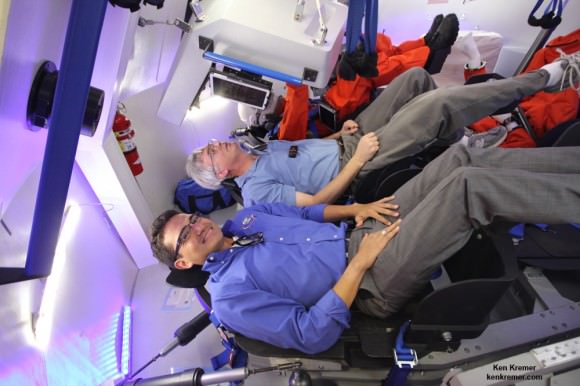
Airframe Structure for First Commercial Dream Chaser Spacecraft Unveiled
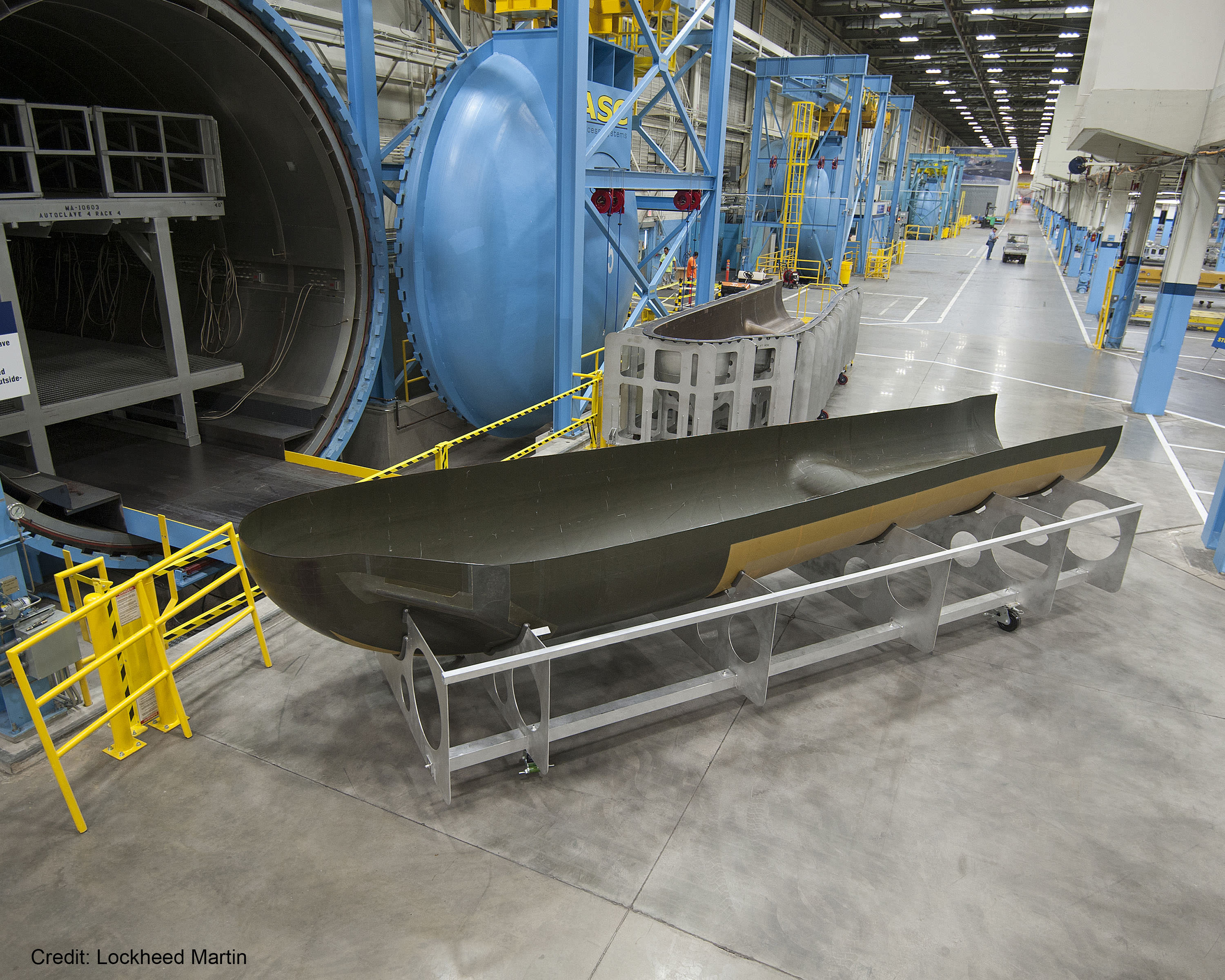
The orbital airframe structure for the first commercial Dream Chaser mini-shuttle that will launch to Earth orbit just over two years from now has been unveiled by Sierra Nevada Corporation (SNC) and program partner Lockheed Martin.
Sierra Nevada is moving forward with plans for Dream Chaser’s first launch and unmanned orbital test flight in November 2016 atop a United Launch Alliance (ULA) Atlas V rocket from Cape Canaveral, Florida.
The winged Dream Chaser is being developed under NASA’s Commercial Crew Program aimed at restoring America’s indigenous human spaceflight access to low Earth orbit and the International Space Station (ISS).

Lockheed Martin is fabricating the structural components for the Dream Chaser’s orbital spacecraft composite structure at the NASA’s Michoud Assembly Facility (MAF) in New Orleans, Louisiana.
MAF has played a long and illustrious history in human space flight dating back to Apollo and also as the site where all the External Tanks for NASA’s space shuttle program were manufactured. Lockheed Martin also builds the pressure vessels for NASA’s deep space Orion crew vehicle at MAF.
Each piece is thoroughly inspected to insure it meets specification and then shipped to Lockheed Martin’s Aeronautics facility in Fort Worth, Texas for integration into the airframe and co-bonded assembly.
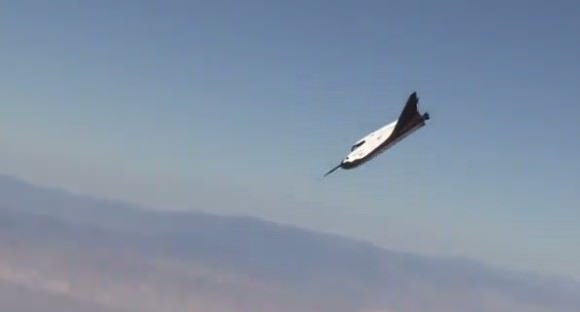
Sierra Nevada chose Lockheed Martin for this significant role in building Dream Chaser airframe based on their wealth of aerospace experience and expertise.
The composite airframe structure was recently unveiled at a joint press conference by Sierra Nevada Corporation and Lockheed Martin at the Fort Worth facility.
“As a valued strategic partner on SNC’s Dream Chaser Dream Team, Lockheed Martin is under contract to manufacture Dream Chaser orbital structure airframes,” said Mark N. Sirangelo, corporate vice president of SNC’s Space Systems, in a statement.
“We competitively chose Lockheed Martin because they are a world leader in composite manufacturing, have the infrastructure, resources and quality control needed to support the needs of an orbital vehicle and have a proven track record of leading our nation’s top aviation and aerospace programs. Lockheed Martin’s diverse heritage coupled with their current work on the Orion program adds an extra element of depth and expertise to our program. SNC and Lockheed Martin continue to expand and develop a strong multi-faceted relationship.”
Dream Chaser measures about 29 feet long with a 23 foot wide wing span and is about one third the size of NASA’s space shuttle orbiters.
“We are able to tailor our best manufacturing processes, and our innovative technology from across the corporation to fit the needs of the Dream Chaser program,” said Jim Crocker, vice president of Lockheed Martin’s Space Systems Company Civil Space Line of Business.
Upon completion of the airframe manufacturing at Ft Worth, it will be transported to SNC’s Louisville, Colorado, facility for final integration and assembly.
Lockheed Martin will also process Dream Chaser between orbital flights at the Kennedy Space Center, FL in the recently renamed Neil Armstrong Operations and Checkout Building.
SNC announced in July that they successfully completed and passed a series of risk reduction milestone tests on key flight hardware systems under its Commercial Crew Integrated Capability (CCiCap) agreement with NASA that move the private reusable spacecraft closer to its critical design review (CDR) and first flight.
As a result of completing Milestones 9 and 9a, SNC has now received 92% of its total CCiCAP Phase 1 NASA award of $227.5 million.
“We are on schedule to launch our first orbital flight in November of 2016, which will mark the beginning of the restoration of U.S. crew capability to low-Earth orbit,” says Sirangelo.
The private Dream Chaser is a reusable lifting-body design spaceship that will carry a mix of cargo and up to a seven crewmembers to the ISS. It will also be able to land on commercial runways anywhere in the world, according to SNC.
Dream Chaser is among a trio of US private sector manned spaceships being developed with seed money from NASA’s Commercial Crew Program in a public/private partnership to develop a next-generation crew transportation vehicle to ferry astronauts to and from the International Space Station by 2017 – a capability totally lost following the space shuttle’s forced retirement in 2011.
The SpaceX Dragon and Boeing CST-100 ‘space taxis’ are also vying for funding in the next round of contracts to be awarded by NASA around September 2014, NASA officials have told me.
Stay tuned here for Ken’s continuing Sierra Nevada, Boeing, SpaceX, Orbital Sciences, commercial space, Orion, Rosetta, Curiosity, Mars rover, MAVEN, MOM and more planetary and human spaceflight news.
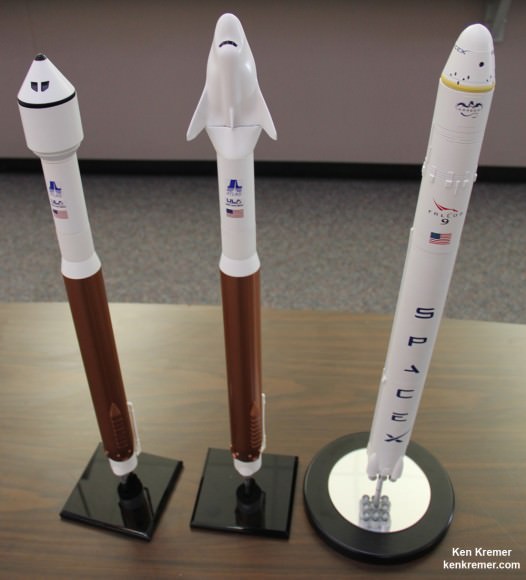
Risk Reduction Milestone Tests Move Commercial Dream Chaser Closer to Critical Design Review and First Flight
The winged Dream Chaser mini-shuttle under development by Sierra Nevada Corp. (SNC) has successfully completed a series of risk reduction milestone tests on key flight hardware systems thereby moving the private reusable spacecraft closer to its critical design review (CDR) and first flight under NASA’s Commercial Crew Program aimed at restoring America’s indigenous human spaceflight access to low Earth orbit and the space station.
SNC announced that it passed NASA’s Milestones 9 and 9a involving numerous Risk Reduction and Technology Readiness Level (TRL) advancement tests of critical Dream Chaser® systems under its Commercial Crew Integrated Capability (CCiCap) agreement with the agency.
Seven specific hardware systems underwent extensive testing and passed a major comprehensive review with NASA including; the Main Propulsion System, Reaction Control System, Crew Systems, Environmental Control and Life Support Systems (ECLSS), Structures, Thermal Control (TCS) and Thermal Protection Systems (TPS).
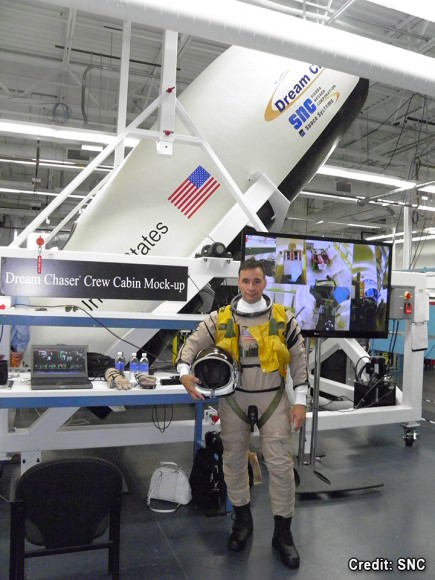
The tests are among the milestones SNC must complete to receive continued funding from the Commercial Crew Integrated Capability initiative (CCiCAP) under the auspices of NASA’s Commercial Crew Program.
Over 3,500 tests were involved in completing the Risk Reduction and TRL advancement tests on the seven hardware systems whose purpose is to significantly retire overall program risk enable a continued maturation of the Dream Chaser’s design.
Dream Chaser is a reusable lifting-body design spaceship that will carry a mix of cargo and up to a seven crewmembers to the ISS. It will also be able to land on commercial runways anywhere in the world, according to SNC.
“By thoroughly assessing and mitigating each of the previously identified design risks, SNC is continuing to prove that Dream Chaser is a safe, robust, and reliable spacecraft,” said Mark N. Sirangelo, corporate vice president of SNC’s Space Systems, in a statement.
“These crucial validations are vital steps in our Critical Design Review and in showing that we have a very advanced and capable spacecraft. This will allow us to quickly and confidently move forward in restoring cutting-edge transportation to low-Earth orbit from the U.S.”

The Dream Chaser is among a trio of US private sector manned spaceships being developed with seed money from NASA’s Commercial Crew Program in a public/private partnership to develop a next-generation crew transportation vehicle to ferry astronauts to and from the International Space Station by 2017 – a capability totally lost following the space shuttle’s forced retirement in 2011.
The SpaceX Dragon and Boeing CST-100 ‘space taxis’ are also vying for funding in the next round of contracts to be awarded by NASA around August/September 2014.
“Our partners are making great progress as they refine their systems for safe, reliable and cost-effective spaceflight,” said Kathy Lueders, manager of NASA’s Commercial Crew Program.
“It is extremely impressive to hear and see the interchange between the company and NASA engineering teams as they delve into the very details of the systems that help assure the safety of passengers.”
After completing milestones 9 and 9a, SNC has now received 92% of its total CCiCAP Phase 1 NASA award of $227.5 million.
“We are on schedule to launch our first orbital flight in November of 2016, which will mark the beginning of the restoration of U.S. crew capability to low-Earth orbit,” says Sirangelo.
Dream Chaser measures about 29 feet long with a 23 foot wide wing span and is about one third the size of NASA’s space shuttle orbiters.
It will launch atop a United Launch Alliance (ULA) Atlas V rocket from Cape Canaveral Launch Complex 41 in Florida.
Since the forced shutdown of NASA’s Space Shuttle program following its final flight in 2011, US astronauts have been 100% dependent on the Russians and their cramped but effective Soyuz capsule for rides to the station and back – at a cost exceeding $70 million per seat.
The Dream Chaser design builds on the experience gained from NASA Langley’s earlier exploratory engineering work with the HL-20 manned lifting-body vehicle.
Read my prior story detailing the wind tunnel testing milestone – here.
Stay tuned here for Ken’s continuing Sierra Nevada, Boeing, SpaceX, Orbital Sciences, commercial space, Orion, Curiosity, Mars rover, MAVEN, MOM and more planetary and human spaceflight news.

Why Commercial Crew is Critical for Future Exploration: One-on-One Interview with NASA Administrator Charles Bolden

NASA Administrator Charles Bolden discusses future of NASA human spaceflight during exploration forum at NASA Headquarters, Washington, DC. Credit: Ken Kremer- kenkremer.com
Story updated[/caption]
NASA GODDARD SPACE FLIGHT CENTER, MD – Why is NASA’s Commercial Crew Program to develop private human transport ships to low Earth orbit important?
That’s the question I posed to NASA Administrator Charles Bolden when we met for an exclusive interview at NASA Goddard.
The Commercial Crew Program (CCP) is the critical enabler “for establishing a viable orbital infrastructure” in the 2020s, NASA Administrator Charles Bolden told Universe Today in an exclusive one-on-one interview at NASA’s Goddard Space Flight Center in Greenbelt, Md.
Bolden, a Space Shuttle commander who flew four time to space, says NASA wants one of the new American-made private crewed spaceships under development by SpaceX, Boeing and Sierra Nevada – with NASA funding – to be ready to ferry US astronauts to the International Space Station (ISS) and back to Earth by late 2017. Flights for other commercial orbital space ventures would follow later and into the next decade.
Since the shutdown of NASA’s space shuttle program following the final flight by STS-135 in 2011 (commanded by Chris Ferguson), America has been 100% dependent on the Russians to fly our astronauts to the space station and back.
“Commercial crew is critical. We need to have our own capability to get our crews to space,” Bolden told me, during a visit to the NASA Goddard cleanroom with the agency’s groundbreaking Magnetospheric Multiscale (MMS) science probes.

Administrator Bolden foresees a huge shift in how the US will conduct space operations in low earth orbit (LEO) just a decade from now. The future LEO architecture will be dominated not by NASA and the ISS but rather by commercial entrepreneurs and endeavors in the 2020s.
“There are going to be other commercial stations or other laboratories,” Bolden excitedly told me.
And the cash strapped Commercial Crew effort to build new astronaut transporters is the absolutely essential enabler to get that exploration task done, he says.
“Commercial Crew is critical to establishing the low Earth orbit infrastructure that is required for exploration.”
“We have got to have a way to get our crews to space.”
“You know people try to separate stuff that NASA does into nice little neat packages. But it’s not that way anymore.”
Bolden and NASA are already looking beyond the ISS in planning how to use the new commercial crew spaceships being developed by SpaceX, Boeing and Sierra Nevada in a public- partnership with NASA’s Commercial Crew Program.
“Everything we do [at NASA] is integrated. We have to have commercial crew [for] a viable low Earth orbit infrastructure – a place where we can do testing – for example with what’s going on at the ISS today.”
“And in the out years you are going to be doing the same type of work.”
“But it’s not going to be on the ISS.”
“After 2024 or maybe 2028, if we extend it again, you are going to see the people on commercial vehicles. There are going to be other stations or other laboratories.”
“But there won’t be NASA operated laboratories. They will be commercially viable and operating laboratories.”
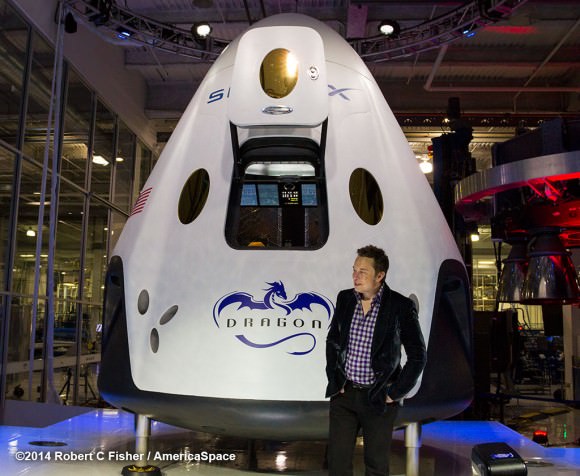
Private NewSpace ventures represent a revolutionary departure from current space exploration thinking. But none of these revolutionary commercial operations will happen if we don’t have reliable and cost effective human access to orbit from American soil with American rockets on American spaceships.
“We need to have our own capability to get our crews to space – first of all. That’s why commercial crew is really, really, really important,” Bolden emphasized.
The ongoing crises in Ukraine makes development of a new US crew transporter to end our total reliance on Russian spaceships even more urgent.
“Right now we use the Russian Soyuz. It is a very reliable way to get our crews to space. Our partnership with Roscosmos is as strong as it’s ever been.”
“So we just keep watching what’s going on in other places in the world, but we continue to work with Roscosmos the way we always have,” Bolden stated.
The latest example is this week’s successful launch of the new three man Russian-US- German Expedition 40 crew to the ISS on a Soyuz.
Of course, the speed at which the US develops the private human spaceships is totally dependent on the funding level for the Commercial Crew program.
Unfortunately, progress in getting the space taxis actually built and flying has been significantly slowed because the Obama Administration CCP funding requests for the past few years of roughly about $800 million have been cut in half by a reluctant US Congress. Thus forcing NASA to delay the first manned orbital test flights by at least 18 months from 2015 to 2017.
And every forced postponement to CCP costs US taxpayers another $70 million payment per crew seat to the Russians. As a result of the congressional CCP cuts more than 1 Billion US Dollars have been shipped to Russia instead of on building our own US crew transports – leaving American aerospace workers unemployed and American manufacturing facilities shuttered.
I asked Bolden to assess NASA’s new funding request for the coming fiscal year 2015 currently working its way through Congress.
“It’s looking better. It’s never good. But now it’s looking much better,” Bolden replied.
“If you look at the House markup that’s a very positive indication that the budget for commercial crew is going to be pretty good.”
The pace of progress in getting our crews back to orbit basically can be summed up in a nutshell.
“No Bucks, No Buck Rogers,” Chris Ferguson, who now leads Boeing’s crew effort, told me in a separate exclusive interview for Universe Today.
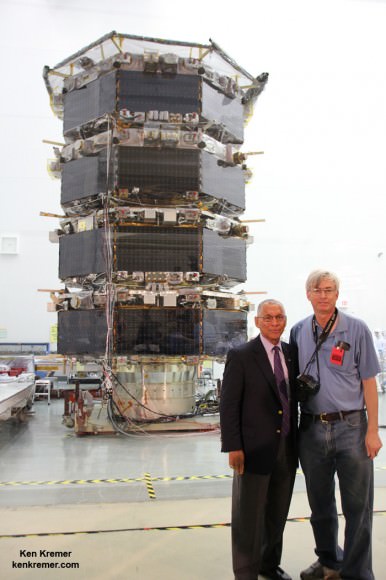
The Boeing CST-100, Sierra Nevada Dream Chaser and SpaceX Dragon ‘space taxis’ are all vying for funding in the next round of contracts to be awarded by NASA around late summer 2014 known as Commercial Crew Transportation Capability (CCtCap).
All three company’s have been making excellent progress in meeting their NASA mandated milestones in the current contract period known as Commercial Crew Integrated Capability initiative (CCiCAP) under the auspices of NASA’s Commercial Crew Program.
Altogether they have received more than $1 Billion in NASA funding under the current CCiCAP initiative. Boeing and SpaceX were awarded contracts worth $460 million and $440 million, respectively. Sierra Nevada was given what amounts to half an award worth $212.5 million.
SpaceX CEO Elon Musk just publicly unveiled his manned Dragon V2 spaceship on May 29.
Boeing’s Chris Ferguson told me that assembly of the CST-100 test article starts soon at the Kennedy Space Center.
NASA officials have told me that one or more of the three competitors will be chosen later this year in the next phase under CCtCAP to build the next generation spaceship to ferry astronauts to and from the ISS by 2017.
In order to certify the fitness and safety of the new crew transporters, the CCtCAP contracts will specify that “each awardee conduct at least one crewed flight test to verify their spacecraft can dock to the space station and all its systems perform as expected.”

Concurrently, NASA is developing the manned Orion crew vehicle for deep space exploration. The state-of-the-art capsule will carry astronauts back to the Moon and beyond on journeys to Asteroids and one day to Mars.
“We need to have our own capability to get our crews to space. Commercial Crew is critical to establishing the low Earth orbit infrastructure that is required for exploration,” that’s the bottom line message from my interview with NASA Administrator Bolden.
Stay tuned here for Ken’s continuing SpaceX, Boeing, Sierra Nevada, Orbital Sciences, commercial space, Orion, Mars rover, MAVEN, MOM and more planetary and human spaceflight news.

Private Dream Chaser Crewed Mini-Shuttle Design Advances through Rigorous Wind Tunnel Tests
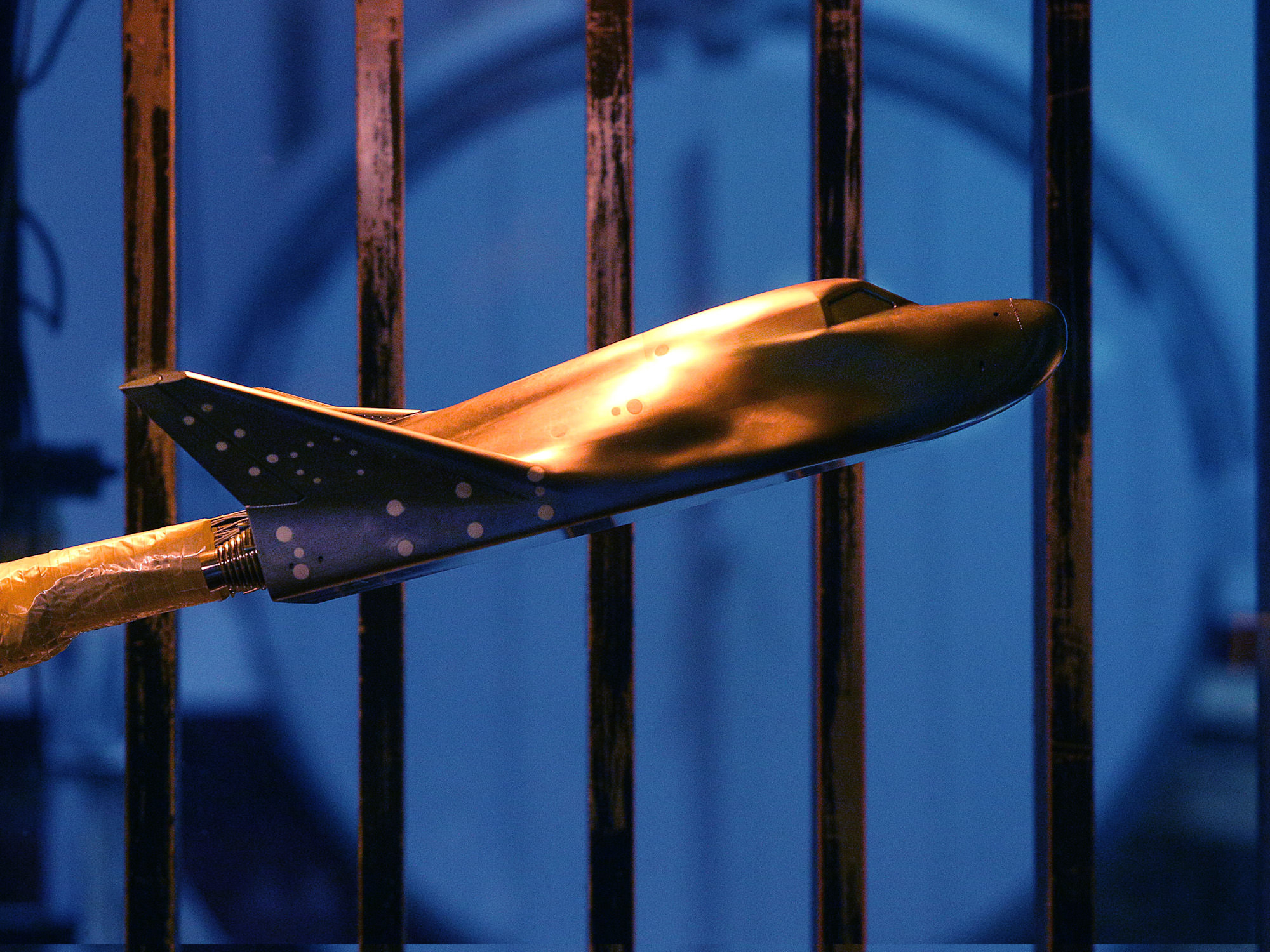
The private Dream Chaser mini-shuttle being developed by Sierra Nevada Corp. (SNC) has successfully completed a series of rigorous wind tunnel tests on scale models of the spacecraft – thereby accomplishing another key development milestone under NASA’s Commercial Crew Program to restore America’s human spaceflight access to low Earth orbit.
Engineers from SNC and NASA’s Langley Research Center in Hampton, Virginia conducted six weeks of intricate testing with several different Dream Chaser scale model spacecraft to study its reaction to subsonic, transonic and supersonic conditions that will be encountered during ascent into space and re-entry from low-Earth orbit.
The tests are among the milestones SNC must complete to receive continued funding from the Commercial Crew Integrated Capability initiative (CCiCAP) under the auspices of NASA’s Commercial Crew Program.
The Dream Chaser is among a trio of US private sector manned spaceships being developed with seed money from NASA’s Commercial Crew Program in a public/private partnership to develop a next-generation crew transportation vehicle to ferry astronauts to and from the International Space Station (ISS) by 2017 – a capability totally lost following the space shuttle’s forced retirement in 2011.
Since that day, seats on the Russian Soyuz are US astronauts only way to space and back.
The SpaceX Dragon and Boeing CST-100 ‘space taxis’ are also vying for funding in the next round of contracts to be awarded by NASA around late summer 2014.

“What we have seen from our industry partners is a determination to make their components and systems work reliably, and in turn they’ve been able to demonstrate the complex machinery that makes spaceflight possible will also work as planned,” said Kathy Lueders, NASA’s Commercial Crew Program manager. “These next few months will continue to raise the bar for achievement by our partners.”
To prepare for the wind tunnel testing, technicians first meticulously hand glued 250 tiny sand grains to the outer surface of the 22-inch long Dream Chaser scale model in order to investigate turbulent flow forces and flight dynamic characteristics along the vehicle that simulates what the actual spacecraft will experience during ascent and re-entry.
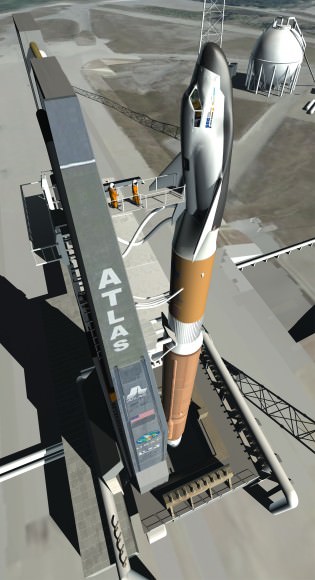
Testing encompassed both the Dream Chaser spacecraft by itself as well as integrated in the stacked configuration atop the Atlas V launch vehicle that will boost the vehicle to space from Launch Complex 41 at Cape Canaveral Air Force Station in Florida.
The testing of the Dream Chaser model was conducted at different angles and positions and around the clock inside the Unitary Plan Wind Tunnel at NASA Langley to collect the data as quickly as possible.
“All the data acquired will be used to validate computer models and populate the Dream Chaser spacecraft performance database,” according to NASA test engineer Bryan Falman.
NASA says that the resulting data showed the existing computer models were accurate.
Additonal wind tunnel testing was done at NASA’s Ames Research Center in Moffett Field, California and the CALSPAN Transonic Wind Tunnel in New York.
The wind tunnel work will also significantly aid in refining the Dream Chaser’s design and performance as well as accelerate completion of the Critical Design Review (CDR) before the start of construction of the full scale vehicle for orbital flight tests by late 2016.
Video Caption: Engineers used a wind tunnel at NASA’s Langley Research Center in Hampton, Virginia, to evaluate the design of Sierra Nevada Corporation’s Dream Chaser spacecraft. Credit: NASA
“The aerodynamic data collected during these tests has further proven and validated Dream Chaser’s integrated spacecraft and launch vehicle system design. It also has shown that Dream Chaser expected performance is greater than initially predicted,” said Mark N. Sirangelo, corporate vice president and head of SNC’s Space Systems.
“Our program continues to fully complete each of our CCiCap agreement milestones assisted through our strong collaboration efforts with our integrated ‘Dream Team’ of industry, university and government strategic partners. We are on schedule to launch our first orbital flight in November of 2016, which will mark the beginning of the restoration of U.S. crew capability to low-Earth orbit.”
The Dream Chaser design builds on the experience gained from NASA Langley’s earlier exploratory engineering work with the HL-20 manned lifting-body vehicle.
“The NASA-SNC effort makes for a solid, complementary relationship,” said Andrew Roberts, SNC aerodynamics test lead. “It is a natural fit. NASA facilities and the extensive work they’ve done with the Dream Chaser predecessor, HL-20, combined with SNC’s engineering, is synergistic and provides great results.”
Dream Chaser will be reusable and can carry a mix of cargo and up to a seven crewmembers to the ISS. It will also be able to land on commercial runways anywhere in the world, according to SNC.
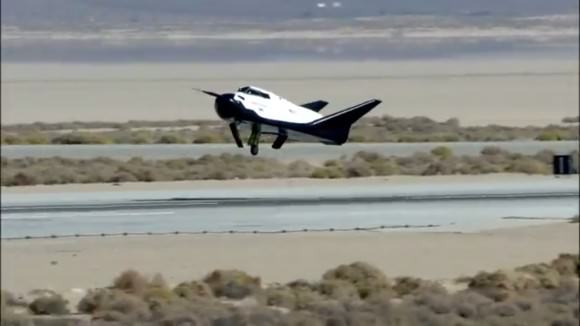
Stay tuned here for Ken’s continuing Sierra Nevada, Boeing, SpaceX, Orbital Sciences, commercial space, Orion, Curiosity, Mars rover, MAVEN, MOM and more planetary and human spaceflight news.

Boeing CST-100 Space Taxi Maiden Test Flight to ISS Expected Early 2017 – One on One Interview with Chris Ferguson, Last Shuttle Commander
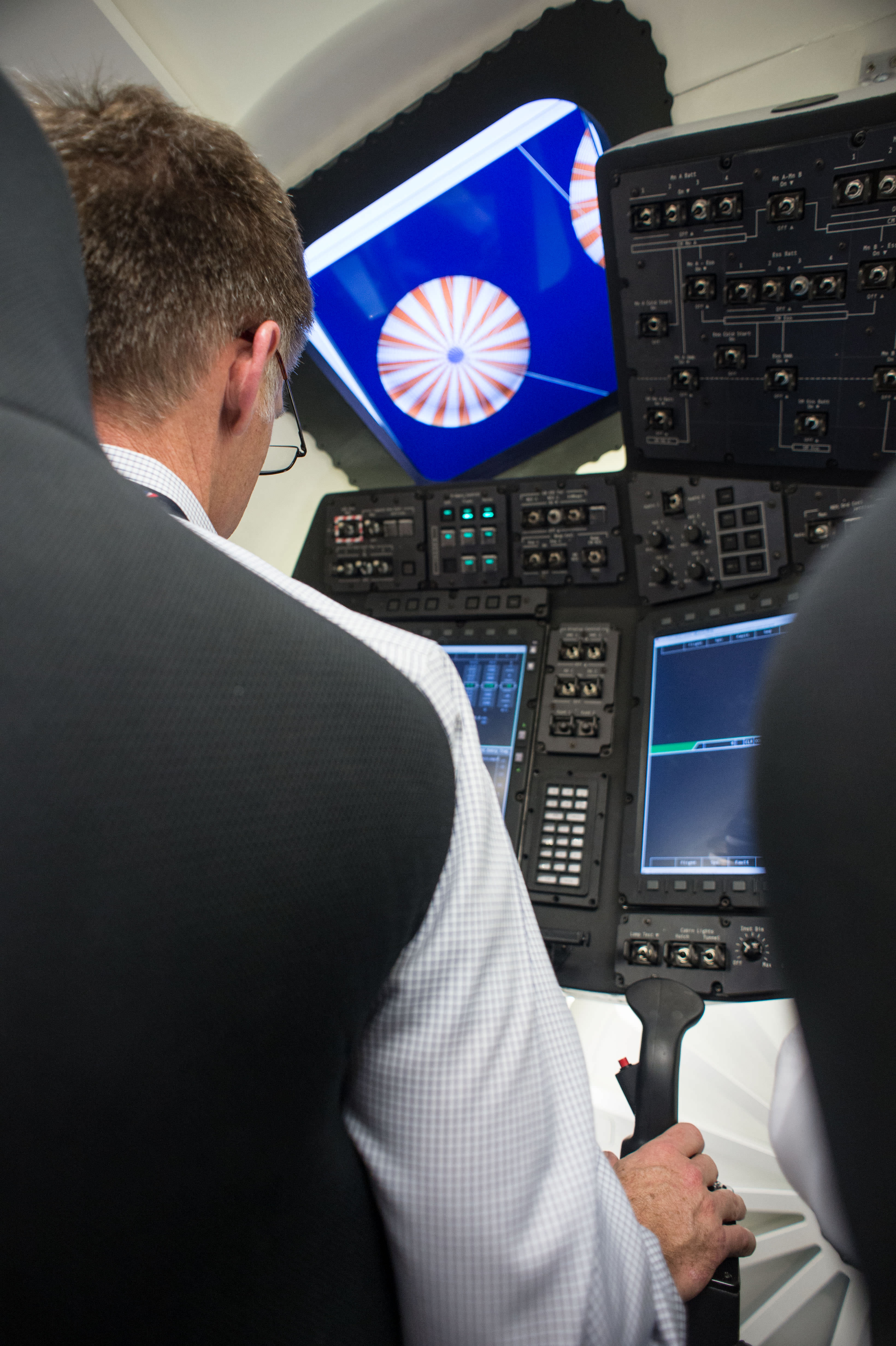
KENNEDY SPACE CENTER, FL – Boeing expects to launch the first unmanned test flight of their commercial CST-100 manned ‘space taxi’ in “early 2017,” said Chris Ferguson, commander of NASA’s final shuttle flight in an exclusive one-on-one interview with Universe Today for an inside look at Boeing’s space efforts. Ferguson is now spearheading Boeing’s human spaceflight capsule project as director of Crew and Mission Operations.
“The first unmanned orbital test flight is planned in January 2017 … and may go to the station,” Ferguson told me during a wide ranging, in depth discussion about a variety of human spaceflight topics and Boeing’s ambitious plans for their privately developed CST-100 human rated spaceship – with a little help from NASA.
Boeing has reserved a launch slot at Cape Canaveral with United Launch Alliance (ULA), but the details are not yet public.
If all goes well, the maiden CST-100 orbital test flight with humans would follow around mid-2017.
“The first manned test could happen by the end of summer 2017 with a two person crew,” he said.
“And we may go all the way to the space station.”
Boeing is among a trio of American aerospace firms, including SpaceX and Sierra Nevada Corp, vying to restore America’s capability to fly humans to Earth orbit and the space station by late 2017, using seed money from NASA’s Commercial Crew Program (CCP) in a public/private partnership. The next round of contracts will be awarded by NASA about late summer 2014.
That’s a feat that America hasn’t accomplished in nearly three years.
“It’s been over 1000 days and counting since we landed [on STS-135],” Ferguson noted with some sadness as he checked the daily counter on his watch. He is a veteran of three space flights.
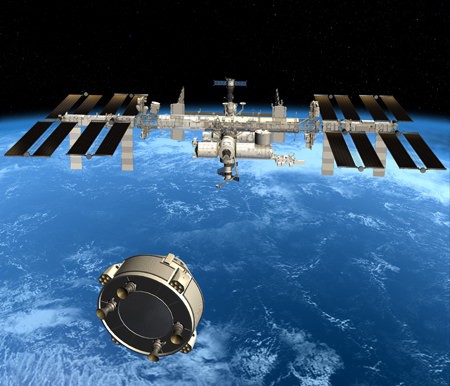
Since the shuttles retirement in July 2011 following touchdown of Space Shuttle Atlantis on the last shuttle flight (STS-135) with Ferguson in command, no American astronauts have launched to space from American soil on American rockets and spaceships.
The only ticket to the ISS and back has been aboard the Russian Soyuz capsule.
Chris and the Boeing team hope to change the situation soon. They are chomping at the bits to get Americas back into space from US soil and provide reliable and cost-effective US access to destinations in low Earth orbit like the ISS and the proposed private Bigelow space station.
Boeing wants to send its new private spaceship all the way to the space station starting on the very first unmanned and manned test flights currently slated for 2017, according to Ferguson.
“NASA wants us to provide [crew flight] services by November 2017,” said Ferguson, according to the terms of the CCP contact award.”

The CST-100 will launch atop a man rated Atlas V rocket and carry a mix of cargo and up to seven crew members to the ISS.
“So both the first unmanned and manned test flight will be in 2017. The first unmanned orbital flight test is currently set for January 2017. The first manned test could be end of summer 2017,” he stated.
I asked Chris to outline the mission plans for both flights.
“Our first flight, the CST-100 Orbital Flight Test – is scheduled to be unmanned.”
“Originally it was just going to be an on orbital test of the systems, with perhaps a close approach to the space station. But we haven’t precluded our ability to dock.
“So if our systems mature as we anticipate then we may go all the way and actually dock at station. We’re not sure yet,” he said.
So I asked whether he thinks the CST-100 will also go dock at the ISS on the first manned test flight?
“Yes. Absolutely. We want go to all the way to the space station,” Ferguson emphatically told me.
“For the 1st manned test flight, we want to dock at the space station and maybe spend a couple weeks there.”
“SpaceX did it [docking]. So we think we can too.”
“The question is can we make the owners of the space station comfortable with what we are doing. That’s what it really comes down to.”
“As the next year progresses and the design matures and it becomes more refined and we understand our own capability, and NASA understands our capabilities as the space station program gets more involved – then I’m sure they will put the same rigor into our plan as they did into the SpaceX and Orbital Sciences plans.”
“When SpaceX and Orbital [wanted to] come up for the grapple [rather than just rendezvous], NASA asked ‘Are these guys ready?’ That’s what NASA will ask us.”
“And if we [Boeing] are ready, then we’ll go dock at the station with our CST-100.”
“And if we’re not ready, then we’ll wait another flight and go to the station the next time. It’s just that simple.”
“We looked at it and this is something we can do.”
“There are a lot of ways we have to make NASA and ourselves happy. But as a company we feel we can go do it,” Ferguson stated.

So the future looks promising.
But the schedule depends entirely on NASA funding levels approved by Congress. And that vital funding has been rather short on supply. It has already caused significant delays to the start of the space taxi missions for all three companies contending for NASA’s commercial crew contracts because of the significant slashes to the agency’s CCP budget request, year after year.
In fact the schedule has slipped already 18 months to the right compared to barely a few years ago.
So I asked Chris to discuss the CCP funding cuts and resulting postponements – which significantly affected schedules for Boeing, SpaceX and Sierra Nevada.
Here it is in a nutshell.
“No Bucks, No Buck Rogers,” explained Ferguson.
“The original plan was to conduct both the unmanned and manned CST-100 test flights in 2015.”
“Originally, we would have flown the unmanned orbital test in the summer of 2015. The crewed test would have been at the end of 2015.”
“So both flights are now a full year and a half later.” Ferguson confirmed.
“For the presidents [CCP] funding requests for the past few years of roughly about $800 million, they [Congress] only approved about half. It was significantly less than the request.”
Now at this very moment Congress is deliberating NASA’s Fiscal 2015 budget.
NASA Administrator Charles Bolden has said he will beg Congress to approve full funding for the commercial crew program this year – on his hands and knees if necessary.
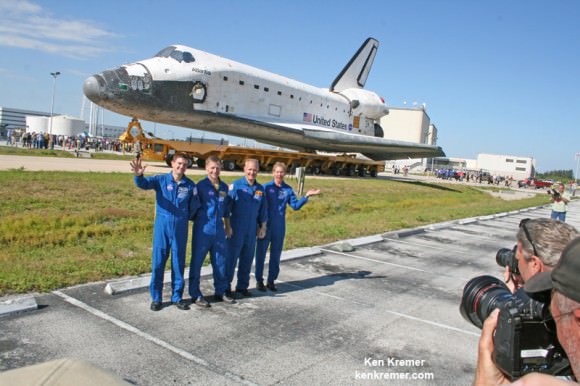
Otherwise there will be further delays to the start of the space taxi missions. And the direct consequence is NASA would be forced to continue buying US astronaut rides from the Russians at $70 Million per seat. All against the backdrop of Russian actions in the Ukraine where deadly clashes potentially threaten US access to the ISS in a worst case scenario if the ongoing events spin even further out of control and the West ratchets up economic sanctions against Russia.
The CST-100 is designed to be a “simple ride up to and back from space,” Ferguson emphasized to me.

It is being designed at Boeing’s Houston Product Support Center in Texas.
In Part 2 of my interview, Chris Ferguson will discuss the details about the design, how and where the CST-100 capsule will be manufactured at a newly renovated, former space shuttle facility at NASA’s Kennedy Space Center in Florida.
Stay tuned here for Ken’s continuing Boeing, SpaceX, Orbital Sciences, commercial space, Orion, Curiosity, Mars rover, MAVEN, MOM and more planetary and human spaceflight news.
